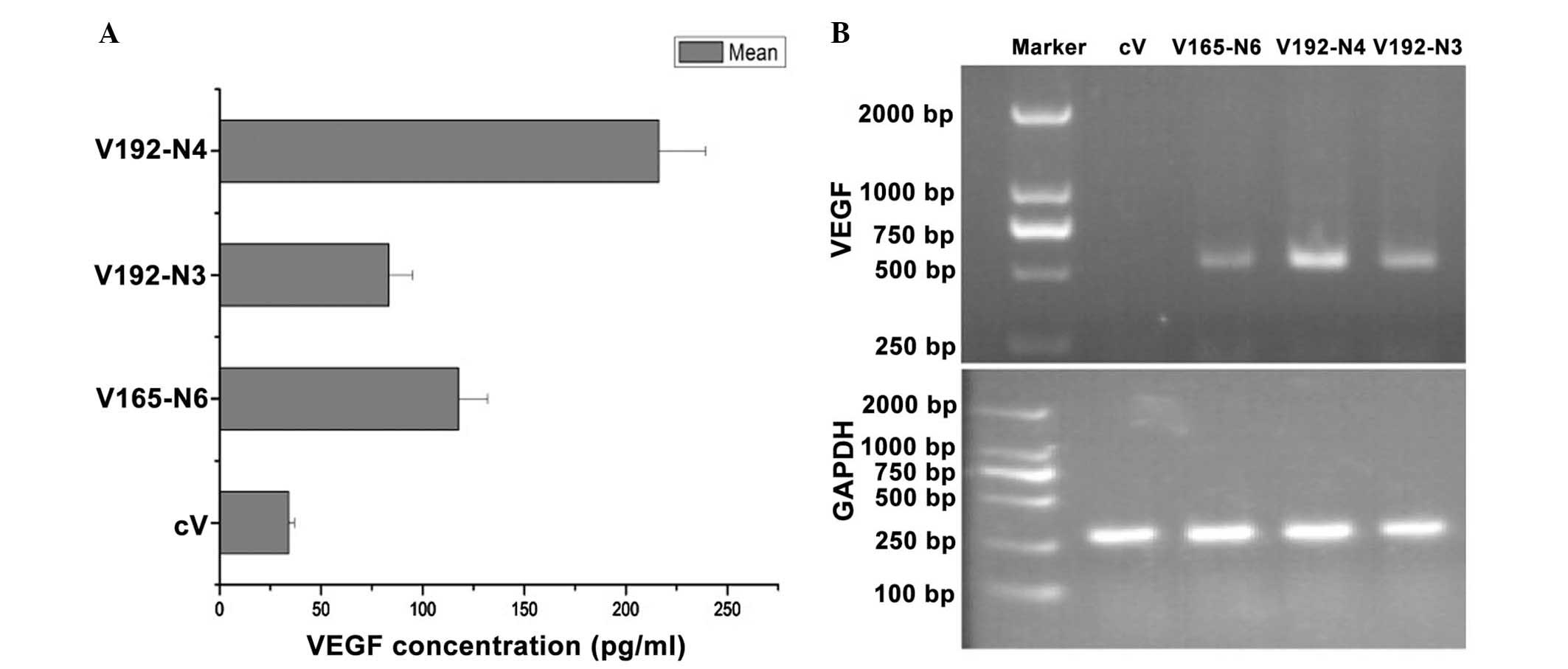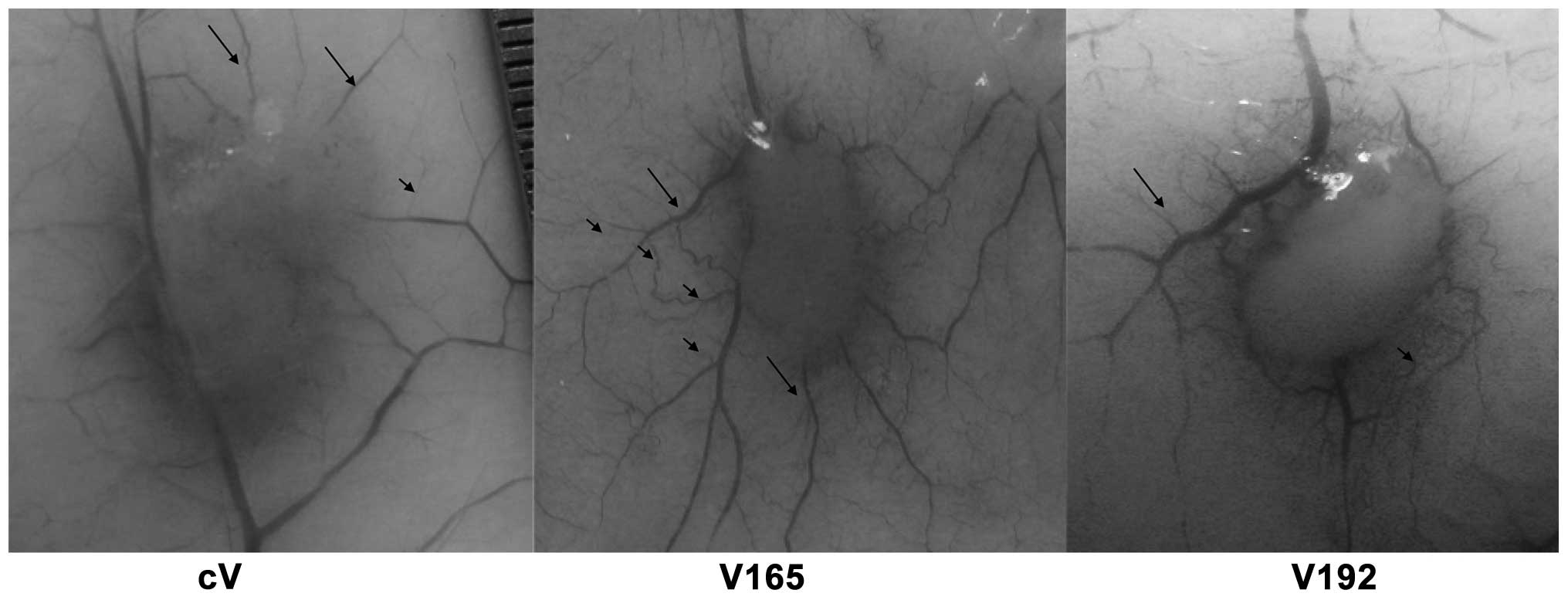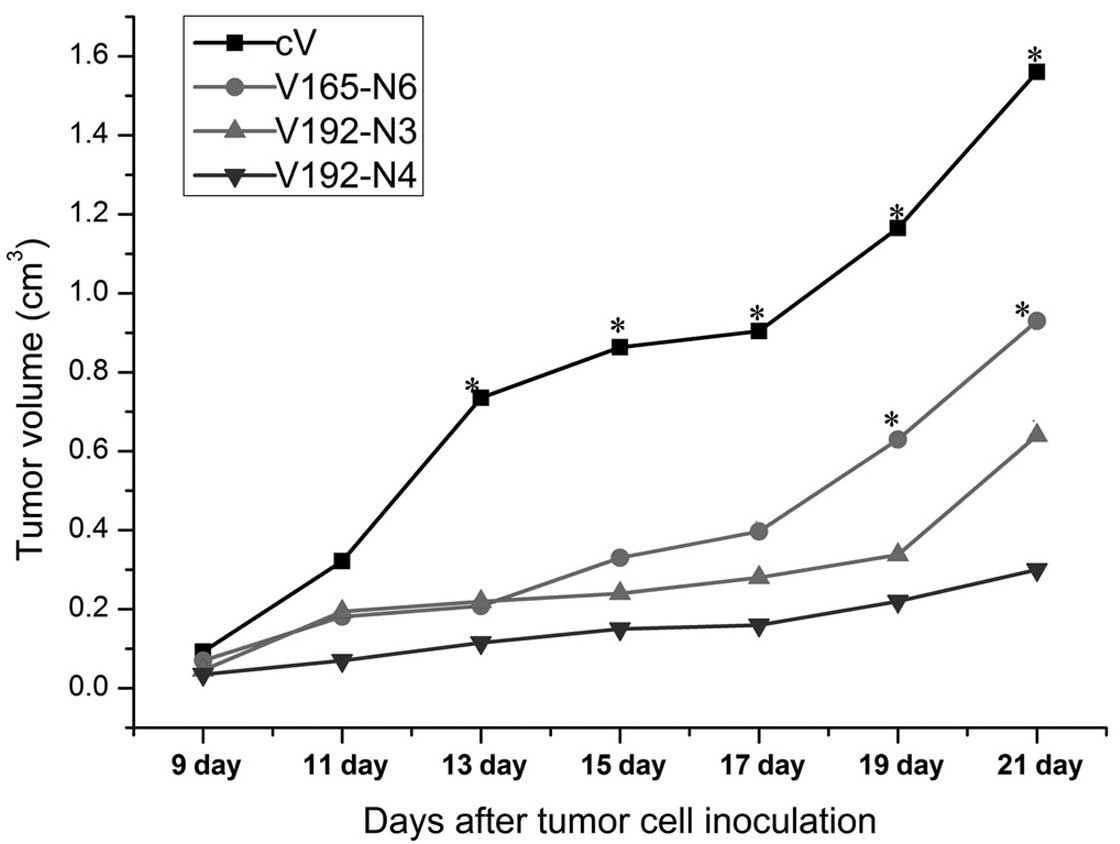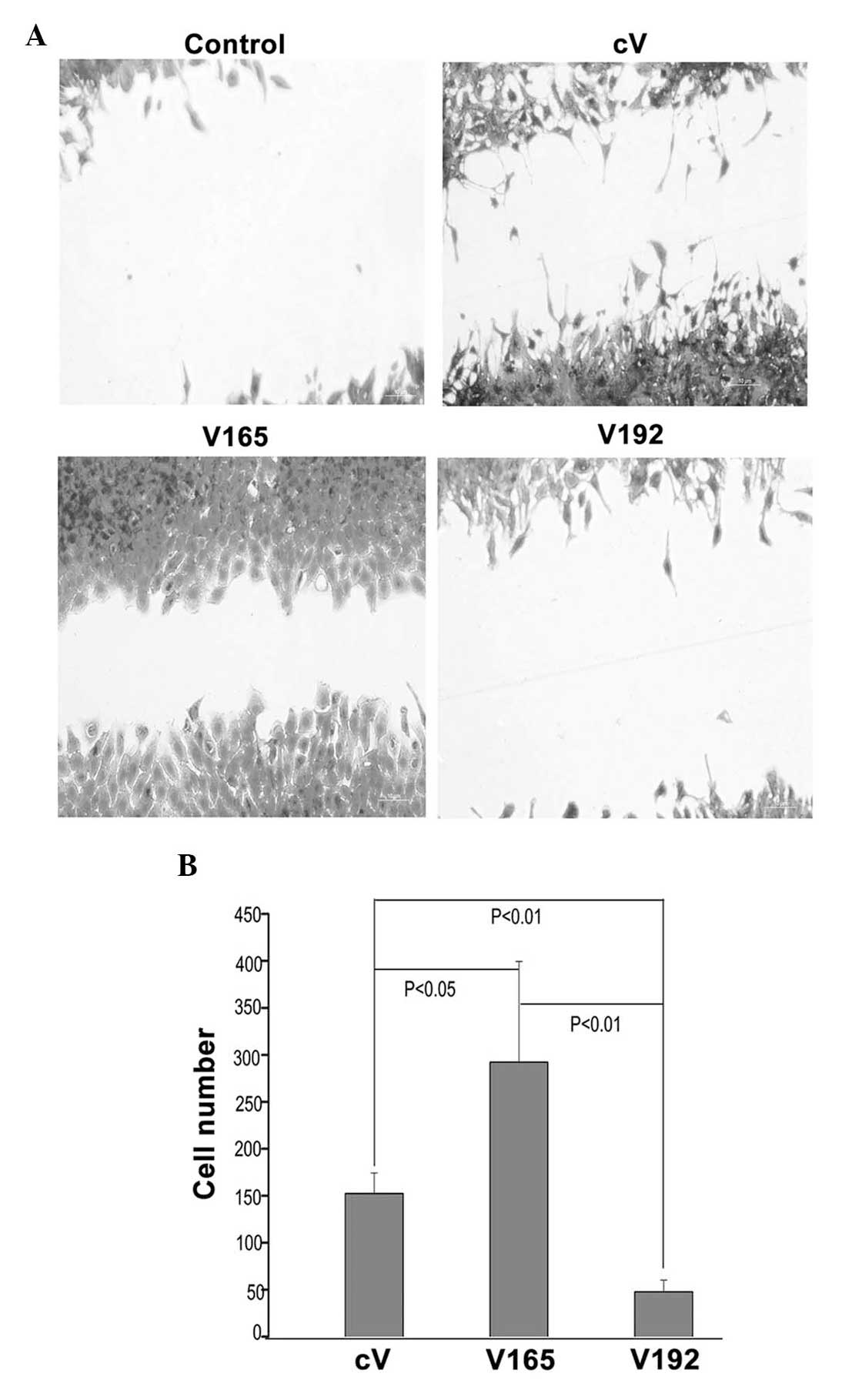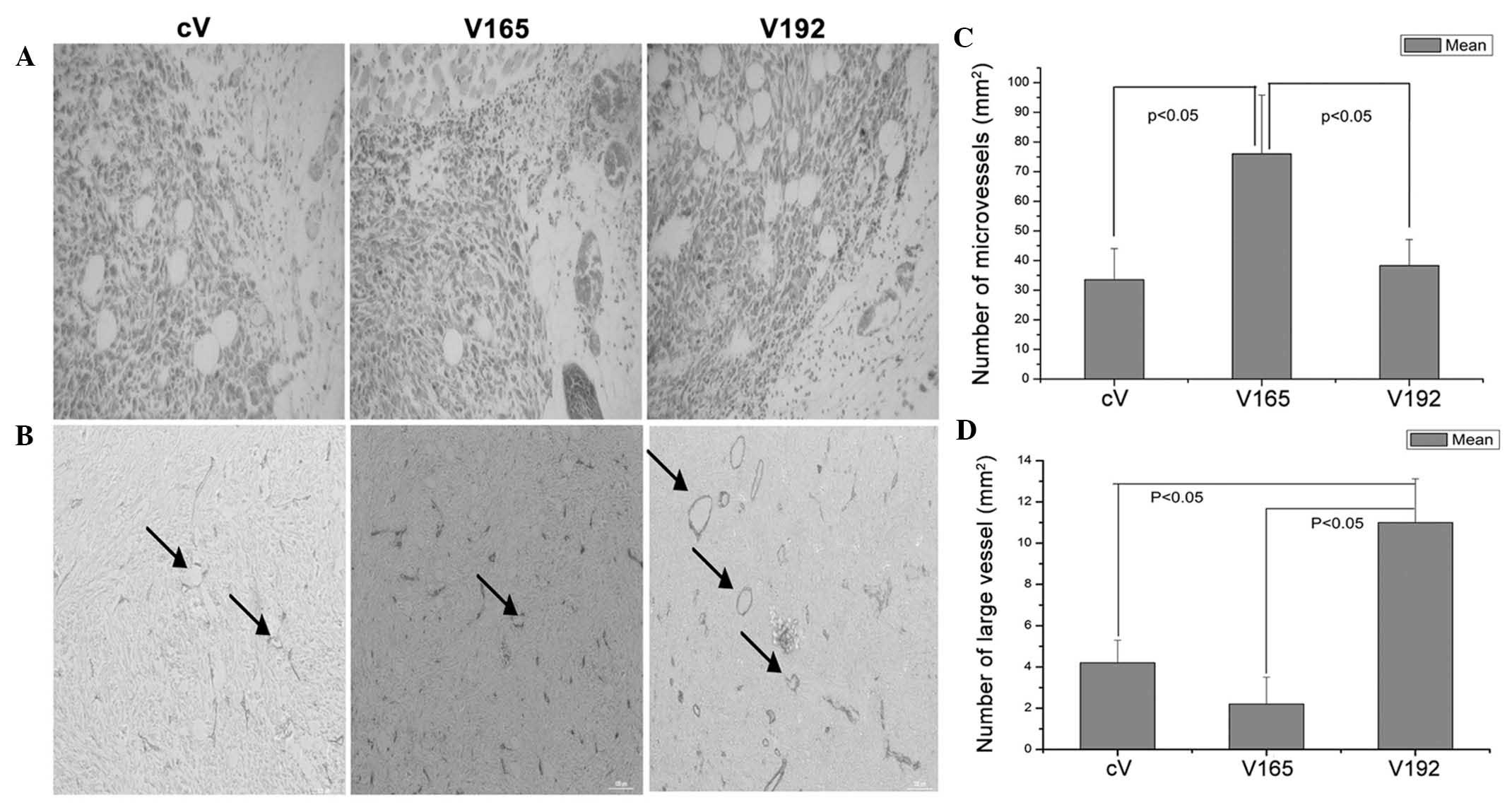|
1
|
Hoeben A, Landuyt B, Highley MS, Wildiers
H, Van Oosterom AT and De Bruijn EA: Vascular endothelial growth
factor and angiogenesis. Pharmacol Rev. 56:549–580. 2004.
View Article : Google Scholar : PubMed/NCBI
|
|
2
|
Carmeliet P: Angiogenesis in life, disease
and medicine. Nature. 438:932–936. 2005. View Article : Google Scholar : PubMed/NCBI
|
|
3
|
Lee RJ, Springer ML, Blanco-Bose WE, Shaw
R, Ursell PC and Blau HM: VEGF gene delivery to myocardium:
deleterious effects of unregulated expression. Circulation.
102:898–901. 2000. View Article : Google Scholar : PubMed/NCBI
|
|
4
|
Hariawala MD, Horowitz JR, Esakof D, et
al: VEGF improves myocardial blood flow but produces EDRF-mediated
hypotension in porcine hearts. J Surg Res. 63:77–82. 1996.
View Article : Google Scholar : PubMed/NCBI
|
|
5
|
Simons M: Angiogenesis: where do we stand
now? Circulation. 111:1556–1566. 2005. View Article : Google Scholar : PubMed/NCBI
|
|
6
|
Huiyong Z, Yong L, Yunxiao S, Wuling Z,
Jingjing L and Taiming L: Generation of a chimeric
plasmin-resistant VEGF165/VEGF183 (132–158) protein and its
comparative activity. Protein Pept Lett. 20:947–954. 2013.
View Article : Google Scholar : PubMed/NCBI
|
|
7
|
Robinson CJ and Stringer SE: The splice
variants of vascular endothelial growth factor (VEGF) and their
receptors. J Cell Sci. 114(Pt 5): 853–865. 2001.PubMed/NCBI
|
|
8
|
Tammela T, He Y, Lyytikkä J, et al:
Distinct architecture of lymphatic vessels induced by chimeric
vascular endothelial growth factor-C/vascular endothelial growth
factor heparin-binding domain fusion proteins. Circ Res.
100:1468–1475. 2007. View Article : Google Scholar : PubMed/NCBI
|
|
9
|
Simons M: Silky, sticky chimeras-designer
VEGFs display their wares. Circ Res. 100:1402–1404. 2007.
View Article : Google Scholar : PubMed/NCBI
|
|
10
|
Keskitalo S, Tammela T, Lyytikkä J, et al:
Enhanced capillary formation stimulated by a chimeric vascular
endothelial growth factor/vascular endothelial growth factor-C silk
domain fusion protein. Circ Res. 100:1460–1467. 2007. View Article : Google Scholar : PubMed/NCBI
|
|
11
|
Zheng Y, Watanabe M, Kuraishi T, Hattori
S, Kai C and Shibuya M: Chimeric VEGF-ENZ7/PlGF specifically
binding to VEGFR-2 accelerates skin wound healing via enhancement
of neovascularization. Arterioscler Thromb Vasc Biol. 27:503–511.
2007. View Article : Google Scholar
|
|
12
|
Lee S, Jilani SM, Nikolova GV, Carpizo D
and Iruela-Arispe ML: Processing of VEGF-A by matrix
metalloproteinases regulates bioavailability and vascular
patterning in tumors. J Cell Biol. 169:681–691. 2005. View Article : Google Scholar : PubMed/NCBI
|
|
13
|
Lauer G, Sollberg S, Cole M, Krieg T and
Eming SA: Generation of a novel proteolysis resistant vascular
endothelial growth factor165 variant by a site-directed mutation at
the plasmin sensitive cleavage site. FEBS Lett. 531:309–313. 2002.
View Article : Google Scholar : PubMed/NCBI
|
|
14
|
Suhonen KA, Anttila MA, Sillanpää SM,
Hämäläinen KM, Saarikoski SV, Juhola M and Kosma VM: Quantification
of angiogenesis by the Chalkley method and its prognostic
significance in epithelial ovarian cancer. Eur J Cancer.
43:1300–1307. 2007. View Article : Google Scholar : PubMed/NCBI
|
|
15
|
Grunstein J, Masbad JJ, Hickey R, Giordano
F and Johnson RS: Isoforms of vascular endothelial growth factor
act in a coordinate fashion to recruit and expand tumor
vasculature. Mol Cell Biol. 20:7282–7291. 2000. View Article : Google Scholar : PubMed/NCBI
|
|
16
|
Mineur P, Colige AC, Deroanne CF, et al:
Newly identified biologically active and proteolysis-resistant
VEGF-A isoform VEGF111 is induced by genotoxic agents. J Cell Biol.
179:1261–1273. 2007. View Article : Google Scholar : PubMed/NCBI
|
|
17
|
Ferrara N: Vascular endothelial growth
factor. Arterioscler Thromb Vasc Biol. 29:789–791. 2009. View Article : Google Scholar : PubMed/NCBI
|
|
18
|
Carmeliet P, Ng YS, Nuyens D, et al:
Impaired myocardial angiogenesis and ischemic cardiomyopathy in
mice lacking the vascular endothelial growth factor isoforms
VEGF164 and VEGF188. Nat Med. 5:495–502. 1999. View Article : Google Scholar : PubMed/NCBI
|
|
19
|
Ruhrberg C, Gerhardt H, Golding M, et al:
Spatially restricted patterning cues provided by heparin-binding
VEGF-A control blood vessel branching morphogenesis. Genes Dev.
16:2684–2698. 2002. View Article : Google Scholar : PubMed/NCBI
|
|
20
|
Maes C, Stockmans I, Moermans K, et al:
Soluble VEGF isoforms are essential for establishing epiphyseal
vascularization and regulating chondrocyte development and
survival. J Clin Invest. 113:188–199. 2004. View Article : Google Scholar : PubMed/NCBI
|
|
21
|
Ferrara N: Binding to the extracellular
matrix and proteolytic processing: two key mechanisms regulating
vascular endothelial growth factor action. Mol Biol Cell.
21:687–690. 2010. View Article : Google Scholar : PubMed/NCBI
|
|
22
|
Stalmans I, Ng YS, Rohan R, et al:
Arteriolar and venular patterning in retinas of mice selectively
expressing VEGF isoforms. J Clin Invest. 109:327–336. 2002.
View Article : Google Scholar : PubMed/NCBI
|
|
23
|
Schoeffner DJ, Matheny SL, Akahane T, et
al: VEGF contributes to mammary tumor growth in transgenic mice
through paracrine and autocrine mechanisms. Lab Invest. 85:608–623.
2005. View Article : Google Scholar : PubMed/NCBI
|
|
24
|
Soker S, Takashima S, Miao HQ, Neufeld G
and Klagsbrun M: Neuropilin-1 is expressed by endothelial and tumor
cells as an isoform-specific receptor for vascular endothelial
growth factor. Cell. 92:735–745. 1998. View Article : Google Scholar : PubMed/NCBI
|
|
25
|
Mercurio AM, Lipscomb EA and Bachelder RE:
Non-angiogenic functions of VEGF in breast cancer. J Mammary Gland
Biol Neoplasia. 10:283–290. 2005. View Article : Google Scholar
|
|
26
|
Hervé MA, Buteau-Lozano H, Vassy R, et al:
Overexpression of vascular endothelial growth factor 189 in breast
cancer cells leads to delayed tumor uptake with dilated
intratumoral vessels. Am J Pathol. 172:167–178. 2008. View Article : Google Scholar :
|
|
27
|
Jia H, Jezequel S, Löhr M, et al: Peptides
encoded by exon 6 of VEGF inhibit endothelial cell biological
responses and angiogenesis induced by VEGF. Biochem Biophys Res
Commun. 283:164–173. 2001. View Article : Google Scholar : PubMed/NCBI
|
|
28
|
Hervé MA, Buteau-Lozano H, Mourah S, Calvo
F and Perrot-Applanat M: VEGF189 stimulates endothelial cells
proliferation and migration in vitro and up-regulates the
expression of Flk-1/KDR mRNA. Exp Cell Res. 309:24–31. 2005.
View Article : Google Scholar : PubMed/NCBI
|
|
29
|
Chen TT, Luque A, Lee S, Anderson SM,
Segura T and Iruela-Arispe ML: Anchorage of VEGF to the
extracellular matrix conveys differential signaling responses to
endothelial cells. J Cell Biol. 188:595–609. 2010. View Article : Google Scholar : PubMed/NCBI
|



